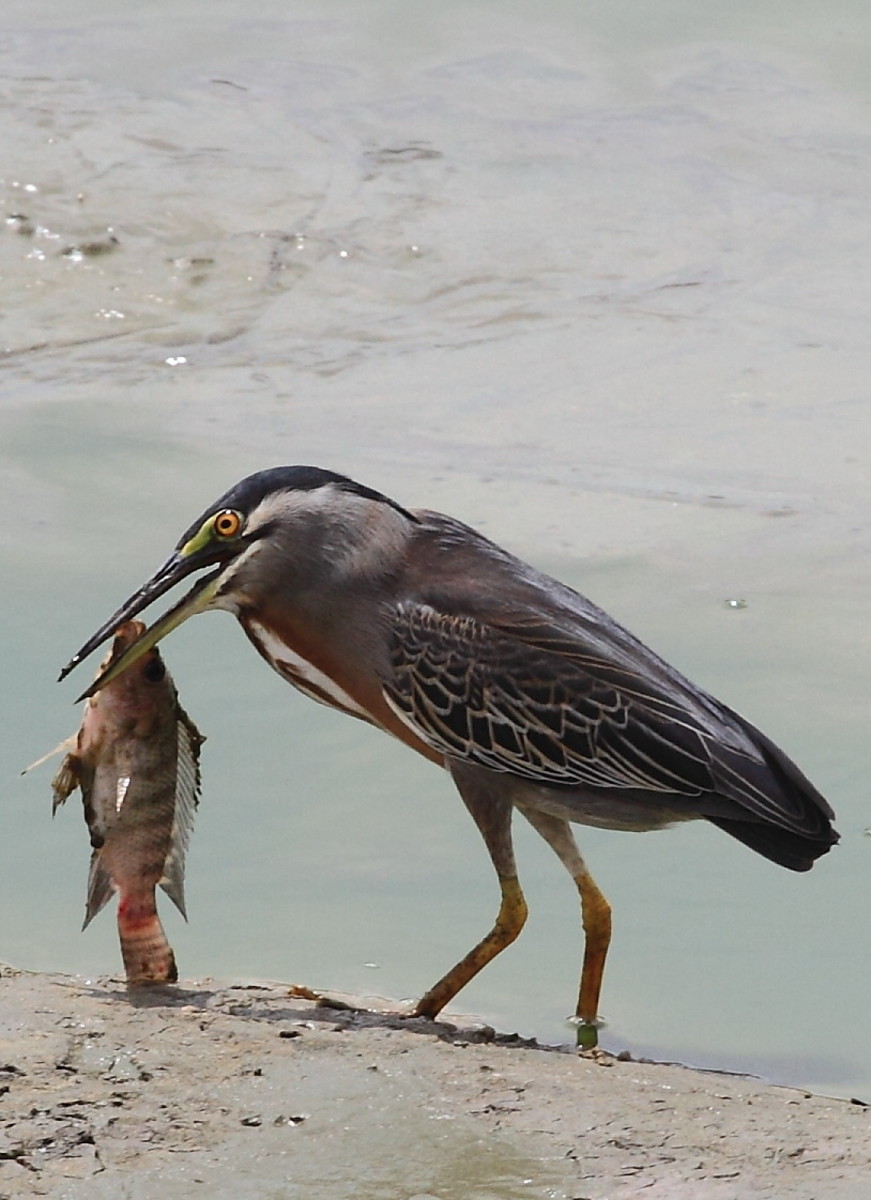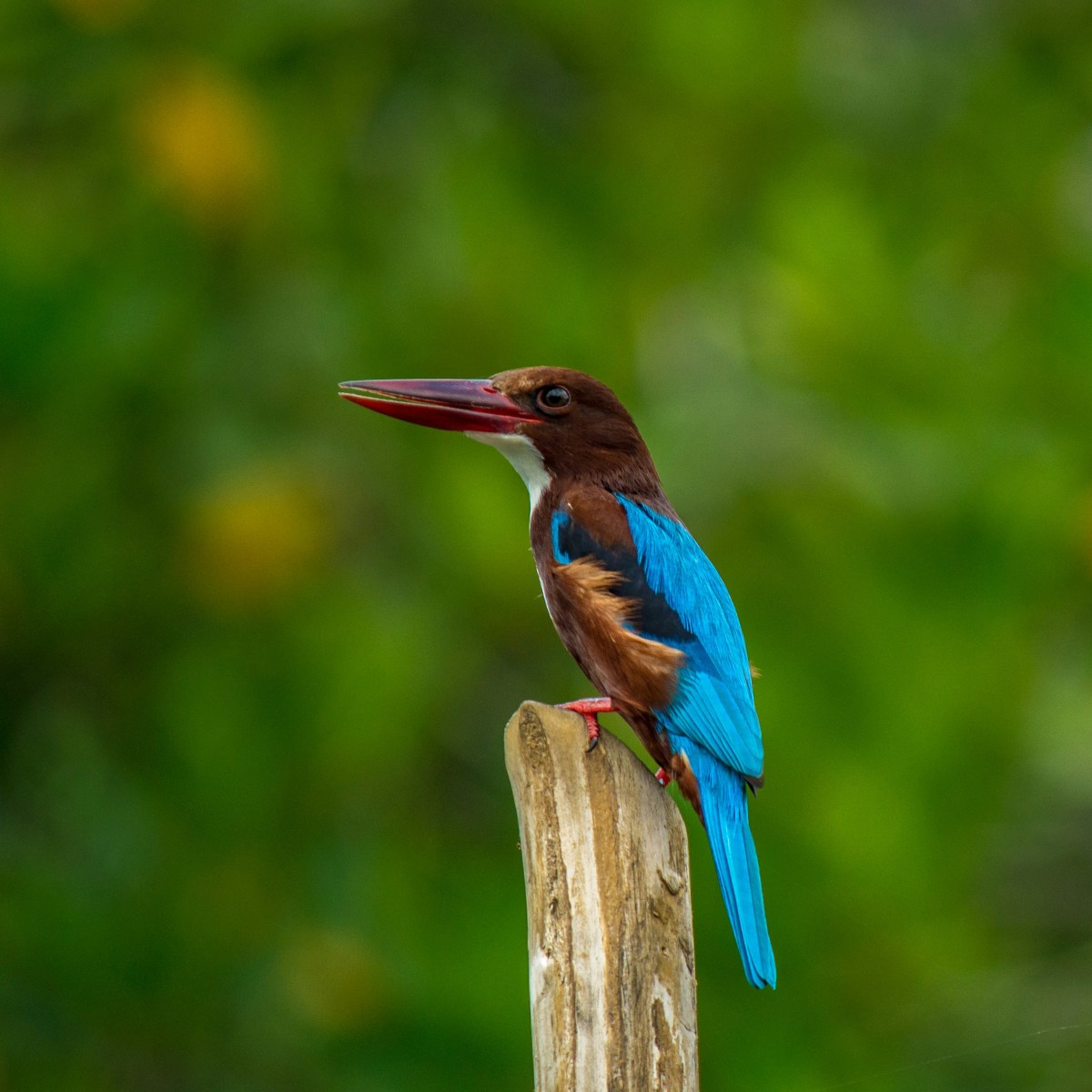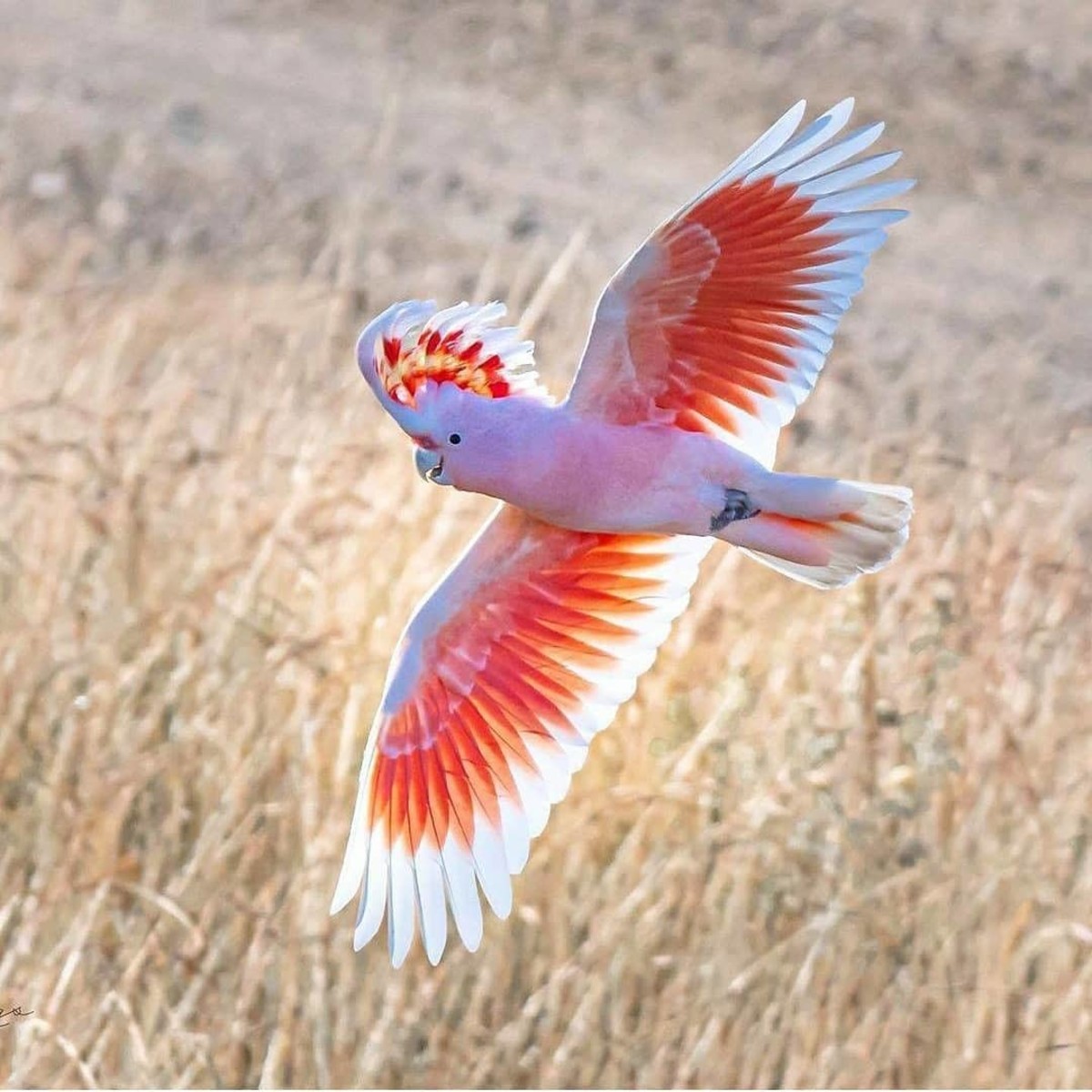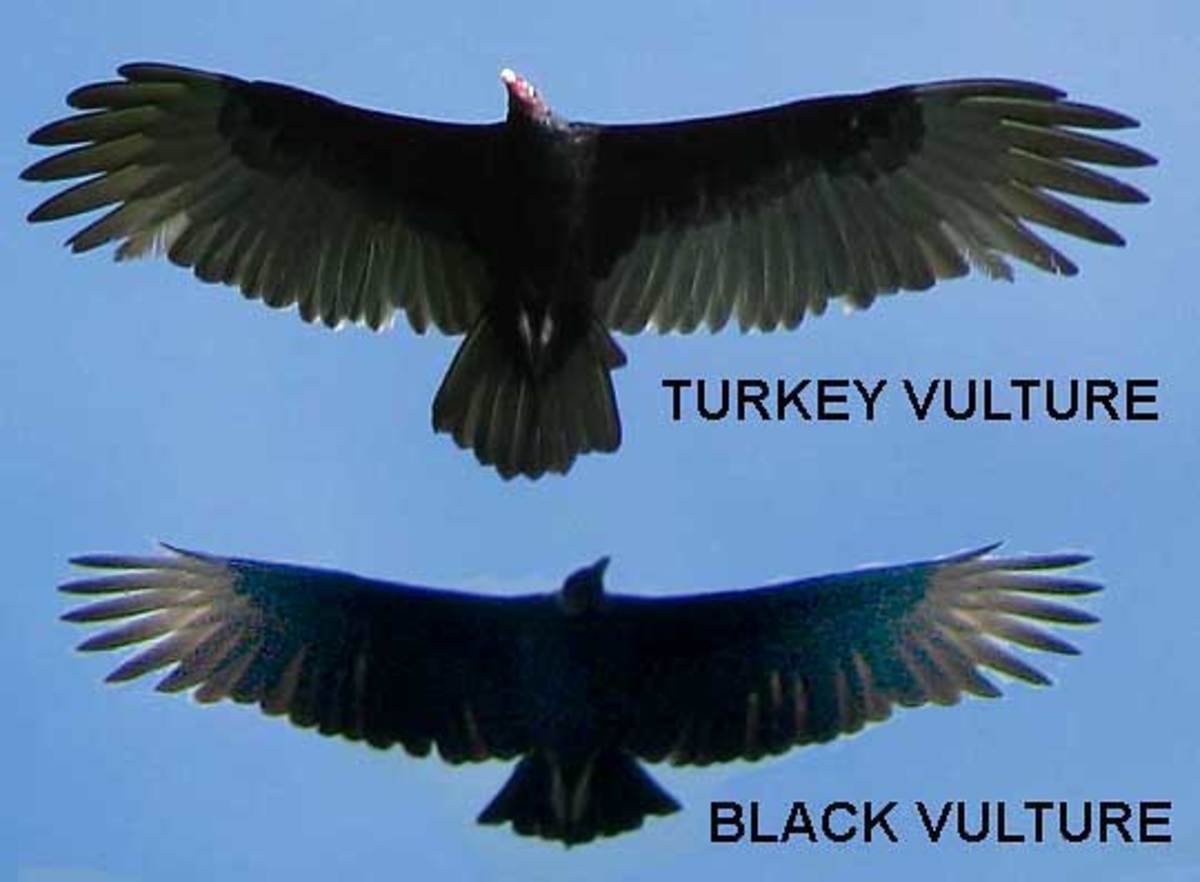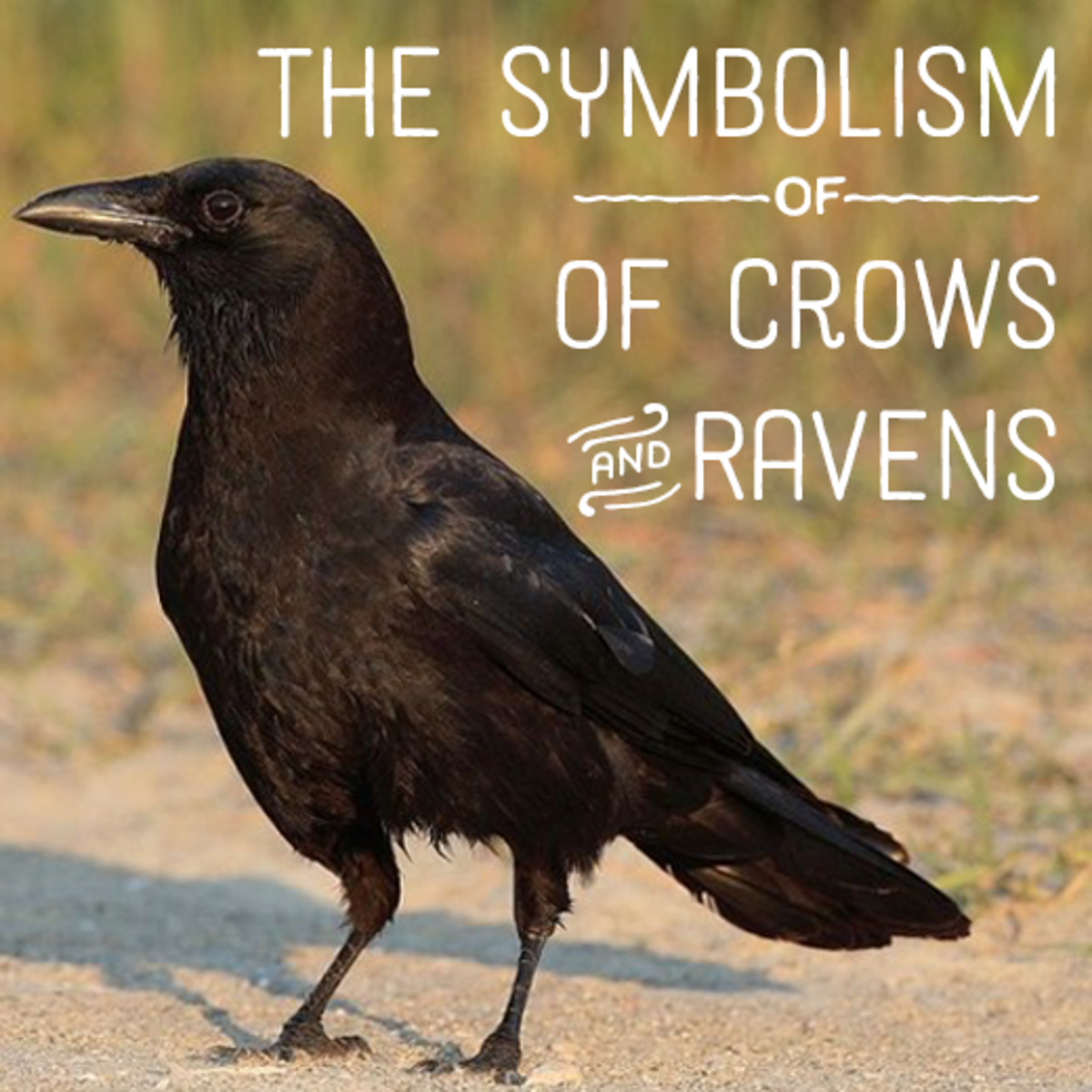What a Common Kingfisher Looks Like
Common Kingfisher (Alcedo atthis)
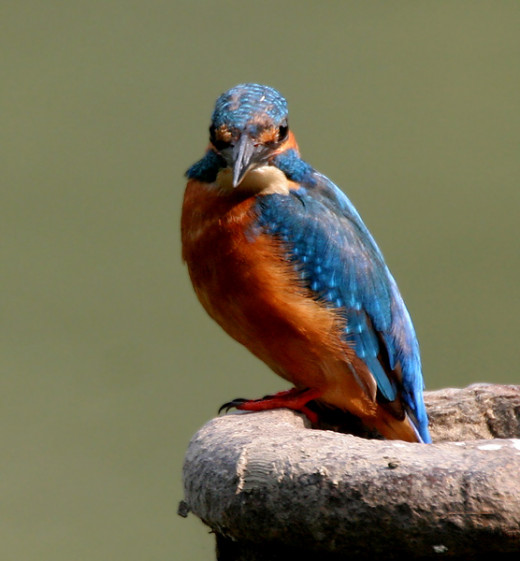
The common kingfisher (Alcedo atthis) is also known as the river kingfisher or Eurasian kingfisher or just kingfisher. It belongs to the order Coraciiformes and in the family Alcedinidae. This bird is small with short wings and tail, has a large head, and a long pointed bill. The kingfisher is a bashful bird that is not always seen around, and if it is spotted, the bird appears as a quick flash of blue. They fly very swiftly around the low waters, and feeding on tadpoles, shrimps, little fish, molluscs, aquatic insects and will normally dive straight into the water from a perch or plunge to grab the victim without being seen. So the kingfishers main activity is hovering with whirring wings above water before diving to catch fish.
When the kingfisher snatches a fish from the water, it flies to a nearby tree and the fish is killed by beating it against the tree, and they are eaten up afterwards. The male and female live in separate territories during the winter season but they meet up by February. When the weather improves and becomes hotter they choose a nesting area, which is sometimes on the bank of a stream. A nearly one meter long tunnel is dug up, with a chamber at the end where an average of six to eight white shiny eggs can be laid there.
Both male and female kingfisher incubate the eggs, and usually take turns in incubating, and the chicks emerge after three weeks or so. The young chicks remain in the chamber for a month, and due to this the tunnel gets soiled with bird droppings. In that time, the parents look after them and feed them until they are ready to catch fish for themselves.
Common Kingfisher in Kolkata, West Bengal, India
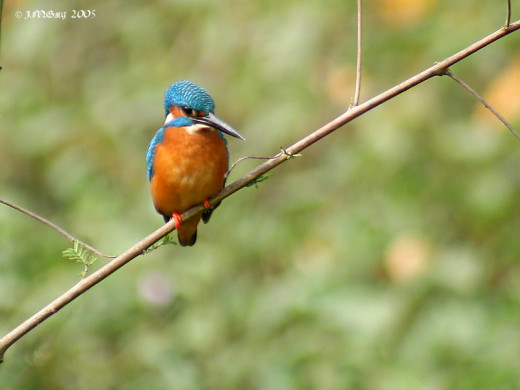
The common kingfisher in general can be recognized with ease. They have vibrant and colorful feathers (plumage), but in the shade the colors appear as if they're faded. The crown (top of the birds head) is dark blue with light blue patches of color. The upper parts are bright blue and green, the lower parts are brown or sort of chestnut-colored. The back and the wings are shiny blue, with brownish-red cheeks and the chest, belly is chestnut-colored. The throat has a white patch and a white stripe on its neck below the cheek. The long-pointed bill is black, but in the female it has red flecks on the lower part of the bill, and the legs and feet are coral red in both male and female.
They also have a voice, but they may not have their own song, instead a high-pitched shrill call like a 'cheet' or 'chickee' is heard most of the time. Lastly, they measure 15-17 centimeters in length, wingspan between 24-27 centimeters and weigh between 23-25 grams or sometimes more.
The common kingfisher's habitat is in streams, lakes, slow-flowing freshwater rivers, coastal areas in the winter, and also in marshes. They are found in most parts of the world especially across western and central Europe, Asia, North Africa and North America.
Observe the Whirring Wing Beats

Extra facts on kingfishers in general:
- There are around 120 known species of kingfisher birds in the world.
- The laughing kookaburra is related to the kingfisher birds and is one of the largest and heaviest in the family. They are mainly native to Australia, Indonesia and other nearby regions.
- All kingfisher species have long beaks to enable smooth water entry without any excessive splashing when grabbing for fish.
- Kingfishers eyes are very sharp and acute. They use it to concentrate on the fish in the water which enables to grab it with super precision. Some species are known to close their eyes before preying on the fish.
- Kingfishers in Victorian times were hunted and stuffed in cases by taxidermists. They were also used in the millinery business where the vendor used to decorate hats using the feathers.
- A high percentage of kingfishers are perished in the cold winter especially in Northern Europe.
- Several species of kingfishers in some parts of the world don't usually go near the water to hunt for fish. They choose a different diet instead.
Terrestrial Tree Kingfisher



